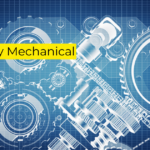Motosas represent a groundbreaking advancement in the realm of sustainable transportation. Combining the concepts of “motor” and “sustainable,” Motosas are a new breed of vehicles designed with environmental consciousness at their core. Unlike traditional vehicles, Motosas are engineered to minimize their ecological impact while maximizing efficiency and performance. By integrating electric power systems with advanced materials and intelligent technologies, these vehicles are setting a new standard for eco-friendly transportation.
The advent of Motosas is a response to the growing need for sustainable alternatives in the face of climate change and resource depletion. They are not just a step forward in vehicle design but a leap towards a more sustainable future. This shift reflects a broader trend in the automotive industry, where the focus is increasingly on reducing carbon footprints and enhancing environmental stewardship.
The Rise of Sustainable Transportation
Sustainable transportation has become a crucial aspect of modern mobility solutions. As concerns about climate change and air pollution intensify, there is a growing demand for transportation methods that reduce environmental impact. The rise of electric vehicles, hybrid technologies, and now Motosas, signifies a paradigm shift in how we approach personal and public transportation.
The transition to sustainable transportation involves not only technological innovations but also changes in consumer behavior and infrastructure development. Governments and organizations worldwide are supporting this shift through incentives, regulations, and investments in green technologies. Motosas are at the forefront of this movement, offering a glimpse into the future of transportation where sustainability and technology seamlessly converge.
Understanding Motosas
Definition and Origins of Motosas
The term “Motosas” is a portmanteau of “motor” and “sustainable,” reflecting the essence of these innovative vehicles. Motosas are designed to integrate cutting-edge technology with sustainable practices to create a new class of transportation. Originating from the need to address environmental concerns while improving vehicle performance, Motosas embody the future of eco-friendly mobility.
These vehicles have evolved from earlier concepts of electric and hybrid cars, incorporating advanced features that set them apart. The development of Motosas is rooted in ongoing research and technological advancements aimed at reducing the carbon footprint of personal and commercial transportation. By combining high-efficiency electric motors with sustainable materials and smart systems, Motosas represent a significant leap forward in the quest for greener transportation solutions.
Key Components of Motosas
Motosas are distinguished by their unique combination of key components that enhance their functionality and efficiency. Two primary elements are integral to their design: the motor and the sensor systems.
- Motor: At the heart of a Motosas is its electric motor, which provides the power needed for propulsion. Unlike traditional internal combustion engines, electric motors in Motosas are designed for high efficiency and low emissions. They offer smooth acceleration and are significantly quieter than conventional engines. The motor’s design is optimized to maximize energy use and extend the vehicle’s range, making it a crucial component of the Motosas’ eco-friendly credentials.
- Sensor: The sensor systems in Motosas play a vital role in enhancing performance and safety. These sensors monitor various parameters, such as battery levels, vehicle speed, and environmental conditions. They enable real-time adjustments to optimize driving dynamics and energy consumption. Advanced sensor technologies also contribute to autonomous driving features, improving safety and convenience for users.
The Technology Behind Motosas
Electric Power Systems in Motosas
Electric power systems are the cornerstone of Motosas, providing a clean and efficient alternative to traditional fossil-fuel engines. These systems are designed to deliver reliable performance while minimizing environmental impact. The electric powertrain in Motosas consists of several key components, including the battery, electric motor, and power management system.
The battery is a critical element, as it stores and supplies the electrical energy needed to drive the motor. Advances in battery technology have led to the development of high-capacity, long-lasting batteries that enhance the range and efficiency of Motosas. These batteries are often made from sustainable materials and are designed for easy recycling, further reducing the vehicle’s environmental footprint.
The power management system ensures that energy is distributed efficiently between the battery and the motor. It optimizes performance based on driving conditions and user preferences, enhancing both energy efficiency and driving experience. This system is integral to achieving the high performance and sustainability goals of Motosas.
Advanced Materials Used in Motosas
Motosas utilize advanced materials to enhance their durability, efficiency, and environmental impact. These materials are selected for their lightweight properties, strength, and sustainability. Carbon fiber, for example, is commonly used in Motosas to reduce weight while maintaining structural integrity. This results in improved fuel efficiency and performance.
In addition to carbon fiber, other materials such as recycled plastics and bio-based composites are employed in the construction of Motosas. These materials contribute to reducing the vehicle’s overall environmental impact and support the circular economy by utilizing recycled resources.
The use of advanced materials extends to the vehicle’s interior as well. Sustainable and eco-friendly materials are used for upholstery and interior finishes, ensuring that every aspect of the Motosas aligns with its green credentials. This focus on materials is part of a broader effort to create a fully sustainable transportation solution.
Intelligent Systems and AI Integration
Intelligent systems and artificial intelligence (AI) play a crucial role in the functionality and efficiency of Motosas. These technologies enhance various aspects of the vehicle, from driving dynamics to user experience.
AI integration in Motosas enables features such as adaptive cruise control, lane-keeping assistance, and automated parking. These systems use data from sensors and cameras to make real-time adjustments, improving safety and convenience for the driver. AI also helps in optimizing energy management, ensuring that the vehicle operates efficiently under different conditions.
Moreover, intelligent systems contribute to the development of autonomous driving capabilities. By leveraging AI algorithms and machine learning, Motosas can analyze complex driving environments and make informed decisions, paving the way for safer and more efficient transportation.
Environmental Benefits of Motosas
Reducing Carbon Footprint
One of the most significant benefits of Motosas is their ability to reduce the carbon footprint associated with transportation. Traditional vehicles powered by internal combustion engines emit greenhouse gases and pollutants that contribute to climate change and air quality issues. In contrast, Motosas operate on electric power, which produces zero tailpipe emissions.
The reduction in carbon emissions is further amplified by the use of renewable energy sources for charging the vehicle. Many Motosas owners opt for solar or wind power, further minimizing their environmental impact. By transitioning to Motosas, individuals and businesses can significantly lower their carbon footprint and contribute to global efforts to combat climate change.
Minimizing Pollution and Waste
In addition to reducing carbon emissions, Motosas help minimize other forms of pollution. Electric vehicles do not produce harmful pollutants such as nitrogen oxides and particulate matter, which are common byproducts of combustion engines. This reduction in air pollution contributes to healthier urban environments and improved public health.
Motosas also address issues related to waste management through the use of recyclable and sustainable materials. Components such as batteries are designed for recycling, and many manufacturers have programs in place to ensure that end-of-life batteries are processed responsibly. This approach helps reduce waste and supports a circular economy, aligning with broader environmental goals.
Energy Efficiency and Conservation
Motosas are designed with energy efficiency and conservation in mind. The electric powertrain is inherently more efficient than traditional combustion engines, converting a higher percentage of energy from the battery into usable power for propulsion. This efficiency translates to longer driving ranges and reduced energy consumption.
The integration of intelligent systems further enhances energy conservation by optimizing energy use based on driving conditions and user preferences. Features such as regenerative braking, which recovers and stores energy during braking, contribute to overall efficiency. By maximizing energy use and minimizing waste, Motosas offer a more sustainable transportation solution.
Also Read: JUVGWG
Comparing Motosas to Traditional Vehicles
Efficiency and Performance
When comparing Motosas to traditional vehicles, efficiency and performance are key differentiators. Motosas, with their electric power systems, are generally more efficient than internal combustion engine vehicles. Electric motors provide instantaneous torque and smooth acceleration, resulting in a more responsive driving experience.
In terms of performance, Motosas can match or even exceed the capabilities of traditional vehicles. Advances in battery technology and motor design have led to impressive driving ranges and acceleration times. Additionally, the absence of a conventional engine allows for a quieter and more refined driving experience.
Cost-Effectiveness
While Motosas may have a higher upfront cost compared to traditional vehicles, they offer long-term cost savings through lower operating and maintenance expenses. Electric vehicles have fewer moving parts than combustion engines, reducing the need for frequent repairs and maintenance. Additionally, the cost of electricity for charging is generally lower than the cost of gasoline or diesel fuel.
Over time, the savings on fuel and maintenance can offset the initial investment in a Motosas. Various government incentives and tax credits for electric vehicles also help to reduce the overall cost, making Motosas a more cost-effective option in the long run.
Longevity and Maintenance
Motosas are designed for durability and longevity, with components built to withstand the rigors of regular use. Electric motors, in particular, have a longer lifespan compared to combustion engines, as they experience less wear and tear. The absence of complex mechanical components such as pistons and valves contributes to reduced maintenance requirements.
The maintenance of Motosas is generally simpler and less frequent than that of traditional vehicles. Regular checks and maintenance focus primarily on the battery, electric motor, and software updates. This streamlined maintenance process contributes to the overall reliability and longevity of Motosas.
Motosas and Technological Innovation
How Motosas Are Shaping the Future of Mobility
Motosas are at the forefront of a technological revolution in transportation. Their innovative design and advanced features are reshaping the future of mobility by setting new standards for sustainability, efficiency, and performance. As more Motosas enter the market, they are driving the development of new technologies and practices in the automotive industry.
The success of Motosas demonstrates the potential for integrating cutting-edge technology with environmental responsibility. Their impact extends beyond individual vehicles, influencing industry trends, regulatory policies, and consumer preferences. Motosas are paving the way for a future where transportation is both technologically advanced and environmentally sustainable.
The Role of AI in Enhancing Motosas
Artificial intelligence plays a crucial role in enhancing the capabilities of Motosas. AI algorithms and machine learning technologies are used to develop advanced driver assistance systems, autonomous driving features, and energy management solutions. These technologies contribute to a safer, more efficient, and enjoyable driving experience.
AI integration also enables predictive maintenance and real-time diagnostics, helping to identify and address potential issues before they become major problems. By leveraging AI, Motosas can continuously improve their performance and adapt to changing driving conditions, ensuring optimal operation and user satisfaction.
Advances in Battery Technology
Battery technology is a critical area of innovation for Motosas. Recent advancements have led to the development of high-capacity, long-lasting batteries that enhance the range and performance of electric vehicles. Solid-state batteries, for example, offer higher energy densities and improved safety compared to traditional lithium-ion batteries.
Ongoing research and development in battery technology aim to further improve energy storage, reduce charging times, and increase overall efficiency. These advancements are essential for the continued growth and adoption of Motosas, as they directly impact the vehicle’s range, performance, and user experience.
Motosas in Urban Planning
Integrating Motosas into City Infrastructure
The integration of Motosas into urban infrastructure is a key consideration for cities adopting sustainable transportation solutions. This involves the development of charging stations, dedicated lanes, and supportive policies that facilitate the use of Motosas in urban environments. Cities that invest in this infrastructure can create a more seamless and convenient experience for Motosas users.
Charging infrastructure is particularly important, as it ensures that Motosas have access to reliable and efficient charging options. The installation of public charging stations and incentives for private charging setups can support the widespread adoption of Motosas and contribute to a greener urban transportation system.
The Impact on Traffic and Transportation Systems
The adoption of Motosas can have a positive impact on traffic and transportation systems. With their advanced technologies and efficient design, Motosas can help reduce congestion, improve traffic flow, and enhance overall mobility. Their integration into smart transportation systems can lead to more efficient use of roadways and reduced travel times.
Motosas can also contribute to the development of autonomous and connected vehicle networks, which have the potential to revolutionize urban transportation. By leveraging AI and sensor technologies, Motosas can communicate with other vehicles and infrastructure, optimizing traffic management and enhancing safety.
Case Studies: Cities Adopting Motosas
Several cities around the world are leading the way in adopting Motosas and integrating them into their transportation systems. For example, cities like Amsterdam and San Francisco have implemented policies and infrastructure to support electric and sustainable vehicles. These case studies highlight the benefits and challenges of incorporating Motosas into urban environments and provide valuable insights for other cities considering similar initiatives.
By examining these case studies, policymakers, planners, and stakeholders can gain a better understanding of the practical implications of adopting Motosas and learn from successful examples. The experiences of these cities can serve as a guide for others looking to embrace sustainable transportation solutions.
Challenges Facing Motosas
Technical and Engineering Challenges
Despite their many advantages, Motosas face several technical and engineering challenges. One of the primary challenges is the development of efficient and reliable battery systems. While advancements have been made, further improvements are needed to enhance energy density, reduce charging times, and ensure long-term durability.
Another challenge is the integration of advanced technologies, such as AI and autonomous driving features, into Motosas. These technologies require sophisticated algorithms, high-performance hardware, and rigorous testing to ensure safety and reliability. Addressing these challenges is essential for the continued success and adoption of Motosas.
Market Adoption and Consumer Acceptance
Market adoption and consumer acceptance are critical factors in the success of Motosas. While there is growing interest in sustainable transportation, some consumers may still have reservations about the cost, range, and performance of electric vehicles. Educating consumers about the benefits of Motosas and addressing their concerns is important for driving widespread adoption.
Incentives, subsidies, and government policies can play a significant role in encouraging the adoption of Motosas. By providing financial incentives and supporting infrastructure development, policymakers can help overcome barriers to adoption and promote the transition to sustainable transportation.
Regulatory and Policy Issues
Regulatory and policy issues can also impact the development and adoption of Motosas. Governments need to establish clear regulations and standards for electric vehicles, including safety, performance, and environmental criteria. Additionally, policies related to charging infrastructure, emissions, and energy sources can influence the growth of the Motosas market.
Collaboration between industry stakeholders, policymakers, and regulators is essential for creating a supportive environment for Motosas. By addressing regulatory and policy challenges, stakeholders can help facilitate the growth and success of sustainable transportation solutions.
The Future of Motosas
Upcoming Trends and Innovations
The future of Motosas is bright, with several exciting trends and innovations on the horizon. Advances in battery technology, such as solid-state batteries and ultra-fast charging, are expected to further enhance the performance and convenience of Motosas. Additionally, the integration of autonomous driving features and smart connectivity will transform the driving experience and improve safety.
Emerging trends, such as vehicle-to-grid (V2G) technology and renewable energy integration, are also likely to play a significant role in the future of Motosas. V2G technology allows Motosas to supply energy back to the grid, supporting energy stability and sustainability. The combination of Motosas with renewable energy sources can further reduce the environmental impact of transportation.
Predictions for the Motosas Market
Experts predict that the Motosas market will continue to grow as technology advances and consumer demand for sustainable transportation increases. Market research indicates that the adoption of electric vehicles, including Motosas, will accelerate in the coming years, driven by technological innovations, supportive policies, and changing consumer preferences.
The growth of the Motosas market will also be influenced by developments in related industries, such as energy storage, smart grids, and autonomous driving technologies. As these sectors evolve, they will contribute to the overall advancement of Motosas and support their widespread adoption.
The Role of Motosas in a Sustainable Future
Motosas play a crucial role in the vision of a sustainable future. By offering an eco-friendly alternative to traditional vehicles, Motosas contribute to reducing greenhouse gas emissions, minimizing pollution, and conserving energy. Their advanced technologies and innovative design align with broader sustainability goals and support the transition to a greener transportation system.
The continued development and adoption of Motosas will be essential for achieving long-term environmental and economic benefits. As the world faces increasing challenges related to climate change and resource depletion, Motosas represent a viable solution for creating a more sustainable and resilient transportation network.
Conclusion
Motosas are at the forefront of the sustainable transportation revolution, combining advanced technology with environmental responsibility. These vehicles offer significant benefits, including reduced carbon emissions, improved energy efficiency, and innovative features. The integration of electric power systems, advanced materials, and intelligent technologies sets Motosas apart from traditional vehicles.
Despite facing challenges such as technical development, market adoption, and regulatory issues, Motosas are poised for continued growth and success. The future of Motosas is bright, with ongoing innovations and trends shaping the landscape of sustainable transportation.









